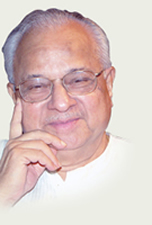This book is not meant to be a history of Sarasvat Community
in the western coast of India. There are many books on the subject as
well as there are many who are more knowledgeable than the present
author. This books only attempts to give another view of the Sarasvat
Community, especially those who are settled on the west coast of
India. The age of the author and absence of cooperation from
immediate compatriots did not enable him to go through manuscript
for grammatical or spelling mistakes in the manuscript. Thinking it
would be better to be guided by the intelligentsia in the community, the
author sent the preliminary manuscript to many, for their comments
and suggestions. But large number of them failed to acknowledge even
the receipt of the manuscript let alone send their suggestions. The
suggestions made by the few have been incorporated to the best of my
ability. Therefore, even if there remain mistakes and errors then the
responsibility is entirely mine.
The attempt to delineate the contours of Sarasvat community
from the earliest settlements on the west coast of India during the long
passage from the time the time the first settlement was established by
the legendary Bhargava Parashurama. In the absence of archeological,
racial, literary and historical literature, the primary base has been the
scriptures and the Puranas. But from the beginning of the Twentieth
Century, there has been upsurge in archeological, racial, linguistic and
historical traditions which enables us to have a fresh look on the
history of Sarasvat settlements in Konkan and other places.
Earlier Mahabharata, Bhagavat Purana and Skanda Purana
were the primary sources. Now we have the archeological findings by
Marshal and others of the Sindu Valley and Sarasvati Civilisations, the
racial by Rice, Guha and others, linguistic studies by Hoernle,
Marshal, Katre, Chattergee, the historical studies by Cunnigham,
Pusalkar, Sukhtankar, Priyolkar ,Shenai Goembab and others. These
have given a new perspectvesto the problems of historicity of the
i
Sarasvat events symbolically mentioned in Vedas, Brahmanas and the
Puranas.
Maxim Gorky a Russian literary giant points out that ‘Science
and literature have much in common; in both observation, comparison
and study are of fundamental importance, the artist like the scientist
needs both imagination and intuition. Imagination and intuition bridge
the gaps in the chain of facts by it’s as yet undiscovered links and
permit the scientist to create hypothesis and theories which more or
less correctly direct the searching of the mind in its study of the forms
and phenomenon of nature. They are of literary creation; the art of
creating characters and types demands imagination , intuition, the
ability to make things up in one’s own mind’.
Similarly, Goethe, the great German philosopher writes in his
book Maxims and Reflections, that ‘The historian’s duty is to separate
the true from the false, the certain from the uncertain and the doubtful
from that which cannot be accepted by investigator must before all
things look upon himself as one who is summoned to serve as jury. He
has only to consider how far the statement of the case is complete and
clearly set forth by evidence. Then he draws his conclusion and gives
his vote, whether it be that his opinion coincides with that of the
foreman or not’.
I am also beholden to the views of another western
Philosopher, Santayana who points out in his book, The Sense of
Beauty, that ‘There are two stages in the criticism of myths . . The first
treats them angrily as superstitious; the second treats them smilingly
as poetry . . Religion is human experience interpreted by human
imagination. . The idea that religion contains a literal, not symbolic
representation of truth and life simply is simply an impossible idea.
Whoever entertains it has not come within the region of profitable
philosophizing on that subject . . Matters of religion should never be
matters of controversy . . We seek rather to honour the piety and
understand the poetry embodies in these fables’.
The author has tried to be guided by these words of wisdom.
But a human being cannot be freed entirely from beliefs, which have to
some extent been hallowed by traditions, because if he rejects another
will wait on the sideline to fill its place. Therefore this book is
addressed to the bold and courageous ones who can question the
beliefs, the systems and the traditions which the society has foisted on
them, in which their commercial acumen is appreciated and lauded and
not their learning and wisdom. One needs to investigate what has lead
the community increasingly to be drawn towards commercialization of
ii
their attributes when their genius was meant to harness the thinking
mind and be harbinger of the Mind and Mouth of Purushattama or as
the Uttama Purusha.
When wisdom comes to marketable commodity, it comes to be
discounted in the ration of the wealth it could generate. Wealth and
prosperity comes to be paraded and the intellegensia stands on the
sidelines either dispirited or in awe.
In such situation it is crime to be silent when their essence as
Sarasvats, the children of Sarasvati and inheritors of Srasvat Muni is
endangered, it is for the intellegensia to wake up, to rekindle the
pristine purity in the hearts and minds of the members of the
community, from shaking them from slumber, filling the blanks which
are unclear, instead of standing on the sidelines waiting for deliverance
from the Divine.
If this books makes even a slightest of ripple in the
cumulative consciousness of the community, the efforts may well be
considered well-served. No one need assume the changes will be
immediate or dramatic; changes never are dramatic but take place
silently, seeping slowly, silently and surely in consciousness.
All the views mentioned here need not be accepted, because
they are wise but they surely need to stir the minds for introspection
and consideration.
BACK


